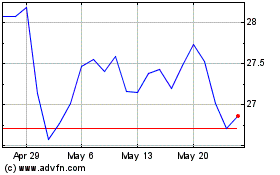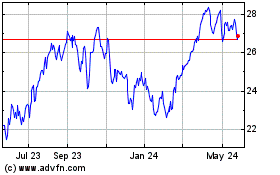Commodity investing has remained choppy, pretty much across the
board. Thanks to the political gridlock, many commodity ETFs have
of late been pushed into the red as demand for risky assets has
been uncertain.
Meanwhile, in the natural gas market, prices have been severely
under pressure, not just for this month, but for the longer term as
well. This is largely due to a burst of supply, thanks to fresh
technologies that bring out more of this precious commodity.
The success of ‘shale gas’ – natural gas trapped within dense
sedimentary rock formations or shale formations – has transformed
the domestic energy supply, with a potentially inexpensive and
abundant new source of fuel for one of the world’s largest energy
consumers (Read: The Comprehensive Guide to Natural Gas ETFs).
With the U.S. projected to surpass Russia in the global energy race
this year, the Oil & Gas sector in the U.S. has been in focus.
According to the Energy Information Administration (EIA), the
U.S. is projected to produce almost 50 quadrillion British thermal
units of oil and natural gas in 2013, which is almost 10% above the
second-largest producer, Russia, and double the third-largest
producer, Saudi Arabia.
The short-term projections look favorable for the natural gas
sector due to a few rig shutdowns in the Gulf of Mexico in the wake
of tropical storms, which raised natural gas prices. Warmer weather
expected for the month of October also acted as a catalyst.
Though this trend might be short-lived in the natural gas market,
more hot (or cold) weather could definitely extend this rally for a
bit longer (Read: Natural Gas ETFs Jump on Hopes of Warm
Weather).
However, many investors generally focus in on one ETF for their
exposure to this space, United States Natural Gas ETF
(
UNG). This product attracts a great deal of
assets, and remains quite popular, despite a potentially better
long term option existing, First Trust ISE Revere Natural Gas Fund
(
FCG).
Below we have given a comparative analysis of these two ETFs from
the Natural Gas segment, each taking different sides on the
performance front due to the difference in approach. Hopefully, by
taking a look at some of these factors, investors can better
ascertain which natural gas ETF is right for them:
Fund Objective and Index Exposure
Launched in May 2007,
FCG tracks the
ISE-Revere Natural Gas Index, which is an
equal-weighted index comprising exchange-listed companies that
derive a substantial portion of their revenues from the exploration
and production of natural gas.
The fund will normally invest at least 90% of its net assets plus
the amount of any borrowings for investment purposes in common
stocks comprising the index. Since inception, the product has
amassed $495.9 million in assets.
Launched in April 2007, United States Natural Gas ETF
(
UNG) tracks the
Henry Hub Natural Gas
Price Index, which is also an equal-weighted index. The
product seeks to replicate the performance, net of expenses, of
natural gas. The trust invests in futures contracts on natural gas
traded on the NYMEX that is the front month contract to expire.
Compared to FCG, the ETF is rich in AUM with an asset base of
$894.8 million.
A Difference in Asset Class
FCG takes an equity based approach by including
stocks that are engaged in the production and exploration of oil
and natural gas in its portfolio. Therefore, it is implied that the
fund would not be impacted by the technicalities and complications
of the derivatives market, like its competitor UNG (Read: The Key
Differences between Natural Gas ETFs).
UNG is a futures ETF which tries to capture the
daily difference in spot prices of natural gas by gaining exposure
to future contracts. Although futures can be considered an
efficient, cost effective way to gain exposure in the commodities
market without having to deal with storage costs and physical
delivery, they still have their own risks.
Holdings
While
UNG deals in future gas contracts,
FCG holds a total of 26 U.S. based securities in
its basket. Its top 10 holdings make about 42% share in the
basket.
Trading Size & Fees
UNG has a huge average daily trading volume of
4.95 million shares a day, while
FCG has an
average daily trading volume of 641,400 shares a day
For exposure in futures contract,
UNG charges a
hefty fee of 99bps, while
FCG is a relatively
cheaper choice as it charges investors 60bps in fees (Find all
Energy ETFs).
What makes FCG attractive?
FCG employs an innovative methodology to select
stocks from the entire universe of companies engaged in the energy
exploration & production business. The stocks are screened and
ranked based on certain fundamental factors such as price to
earnings, price to book value, market capitalization and return on
equity.
The ranks are then averaged and the top 30 stocks become part of
the index and are weighted equally. However, it is prudent to note
that these stocks may not have a 1:1 correlation with the natural
gas futures price; therefore it may not be a pure play on the
commodity. Furthermore, the index eliminates those gas companies
whose reserves do not meet certain criteria.
Performance
UNG has posted a negative performance of about
1.3% year-to-date, in stark contrast to
FCG.
Despite facing some headwinds in its path, FCG has given sturdy
returns of about 23% so far this year. (Read: Natural Gas ETFs
Continue to Soar).
In terms of the last 52-week price performance FCG clearly stands
as the winner, since the product has gained almost 11%, whereas UNG
has shed close to 14.5%.
Technical Indicators
FCG is less volatile to
UNG when
compared with the S&P 500 index. Moreover
FCG
has a better Beta and R-squared score than
UNG.
The 50-Day Simple Moving Average for
UNG has
appreciated by only 1.09%, while for
FCG it has
appreciated by 7.32%.
Bottom Line
Given the strong performance, investors are more likely to switch
from investing in futures gas ETF
UNG to the
equity ETF
FCG. The fund has also performed quite
well against others in the same sector, and its lack of futures
curve issues could make it a better pick over the long term.
Want the latest recommendations from Zacks Investment Research?
Today, you can download
7 Best Stocks for the Next 30
Days. Click to get this free report >>
FT-ISE R NAT GA (FCG): ETF Research Reports
US-NATRL GAS FD (UNG): ETF Research Reports
To read this article on Zacks.com click here.
Zacks Investment Research
Want the latest recommendations from Zacks Investment Research?
Today, you can download 7 Best Stocks for the Next 30 Days. Click
to get this free report
First Trust Natural Gas ... (AMEX:FCG)
Historical Stock Chart
From Apr 2024 to May 2024

First Trust Natural Gas ... (AMEX:FCG)
Historical Stock Chart
From May 2023 to May 2024
